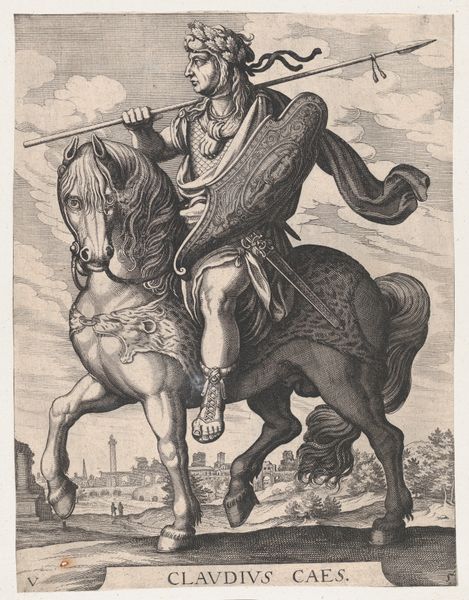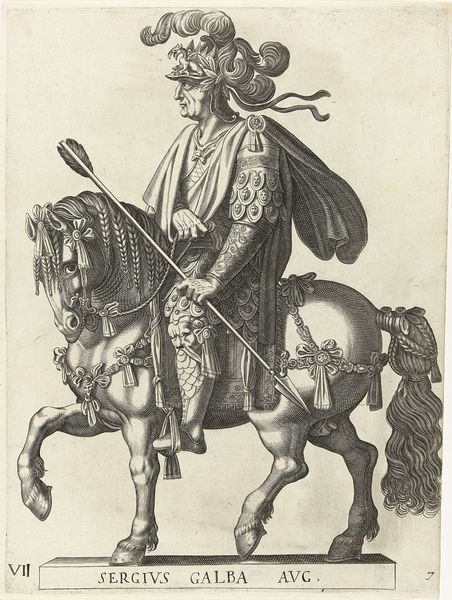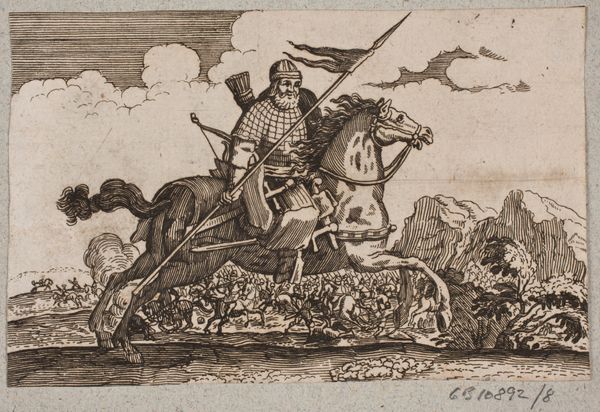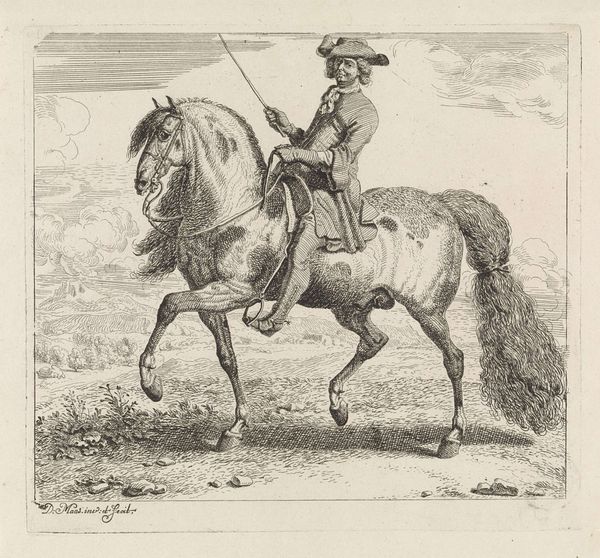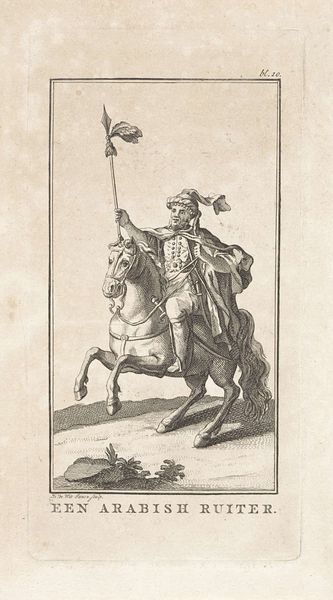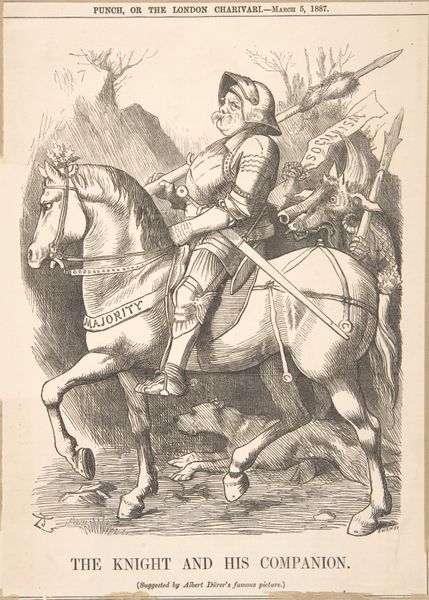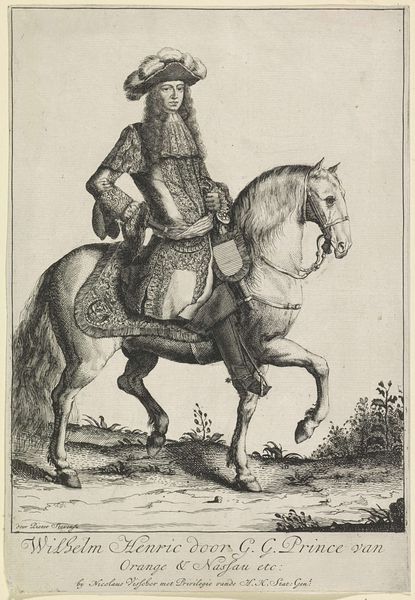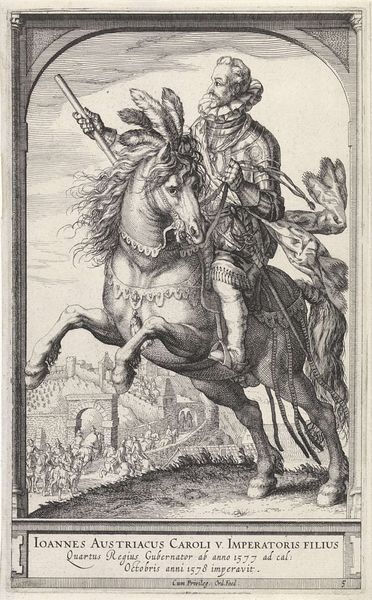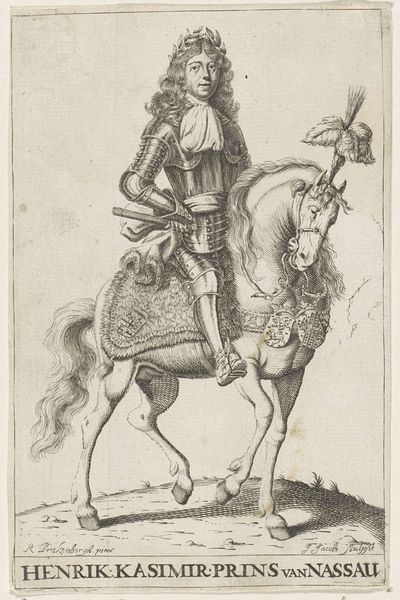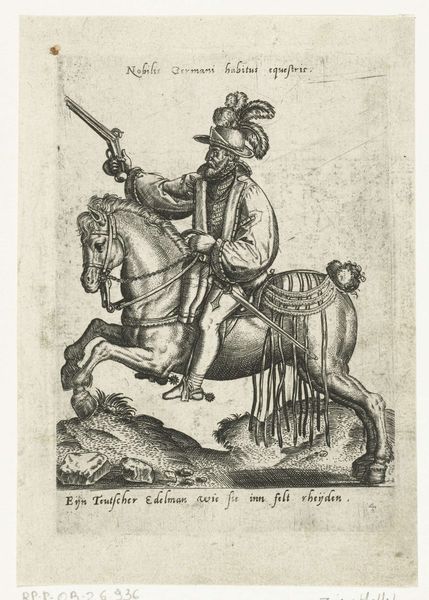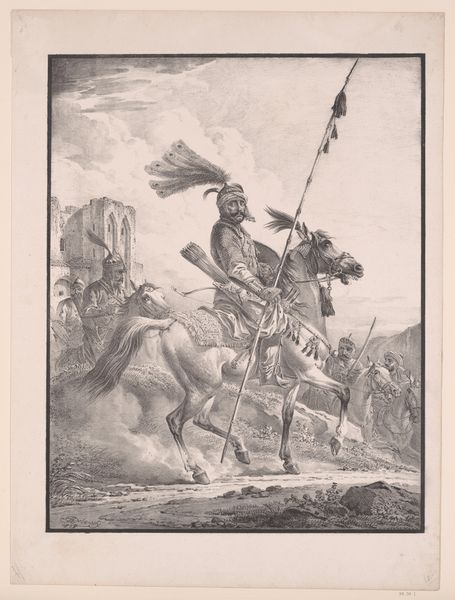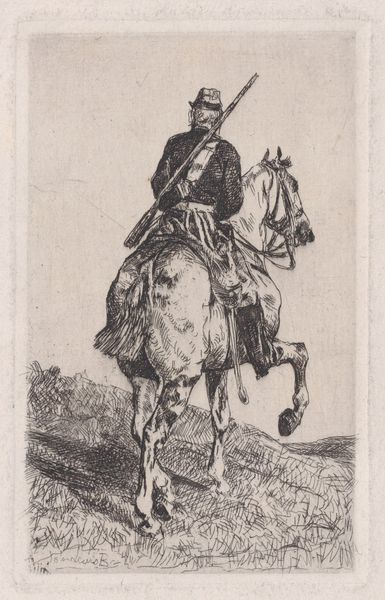
Dimensions: 231 mm (height) x 175 mm (width) (plademaal)
Editor: Here we have J.F. Clemens's "En araber til hest," or "An Arab on Horseback," from around 1773-74. It's an engraving. I’m immediately struck by the level of detail, especially in the rendering of the horse. How do you interpret the social context that might have shaped this kind of piece? Curator: The printmaking process itself speaks volumes. Engravings like this weren’t spontaneous artistic gestures; they were labor-intensive and reproducible. This meant images of ‘exotic’ cultures could be disseminated widely. Consider who the audience for this print would have been. It fed a Western European market eager to consume images reinforcing a sense of the "Orient" as different, perhaps even subservient. Editor: So, the very act of creating multiples changed the art's purpose and message. It seems like less about art for art's sake and more about a consumer good? Curator: Exactly. We need to think about the networks of trade and power at play. Where did Clemens get his imagery? How does his understanding compare to, say, someone with lived experience? Was it drawn from life, or from earlier illustrations perpetuating similar visual tropes? And how does the availability of prints affect painting or drawing depicting similar scenes? Editor: I hadn’t thought about where his reference material came from. That really opens it up. It makes me wonder about the material reality of producing and circulating images during that time. Curator: Precisely. Think about the cost of the materials, the skills involved in engraving, and the systems for distributing these prints. The materiality isn’t separate from the image’s content, but rather informs it. What seems exotic to one person represents someone’s exploited labor and the movement of commodities across empires. Editor: It changes my reading of it for sure. Looking at the lines and details isn't enough. Now, I can't unsee the process that created this and what its place in a larger colonial structure would be. Thanks! Curator: And seeing the image itself as a product gives it an entire new meaning!
Comments
No comments
Be the first to comment and join the conversation on the ultimate creative platform.
